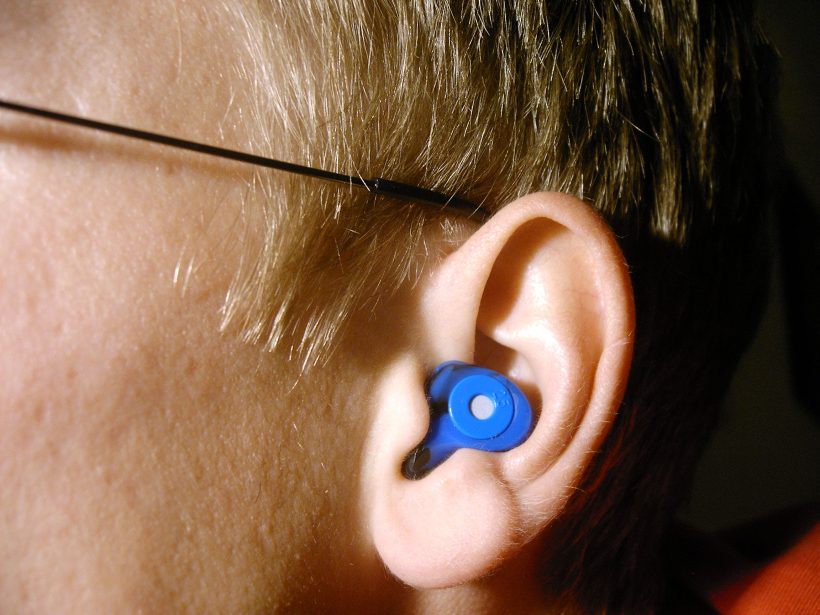In general, motorcyclists need to be more tolerant to noise than the ordinary person. However, there is a distinction to be made between the gratifying shriek of pipes and the annoyance of wind fizzing beneath your helmet on a motorway.
The sound that the wind makes when it encounters solid objects is not really enjoyable to continuously hear during your flight. Controlling wind sound is essential since it might potentially damage your hearing if you are subjected to it for an extended length of time.
At high speeds, the wind is the principal type of disturbance in a helmet. The stronger the wind hits your helmet—and the noisier it will undoubtedly become—the quicker you’re traveling.
However, the amount of noise you will hear from the wind is not solely dependent on your speed. Also taken into account is air turbulence. Air displacement that occurs when anything moves through space is essentially what causes air turbulence.
You really move the wind in your path when you ride a motorcycle. As a result, as you go forward, the air that was displaced behind you returns to its original space, creating disturbance forces in the atmosphere. How can wind noise in a motorbike helmet be reduced? Here are some tips to keep your earpiece quiet so that you don’t lose any hearing.
1. Select The Appropriate Type Of Headgear

The ability of a helmet to reduce sound varies depending on its kind. Therefore, the very first thing you should consider if your helmet is making too much noise is just changing it.
Any open-faced helmet, including those called to as “head caps,” will undoubtedly allow in a significant amount of the commotion sounds. The same is true for helmets with a three-quarter face. These could protect your ears, but they’ll expose your head to the wind, allowing a lot of wind movement to pass through the safety helmet. Typically, your safety helmet will get louder as more wind enters it. You can prevent it with motorcyclescreens.eu.
2. Earplugs for Silent Ride
Buying a motorcycle helmet with earmuffs is a smart option if you reside in a cold environment to keep your ears warm and shield you from wind.
3. Install A Headgear Audio System

Make sure your helmet fits properly. Along with choosing the right kind of safety helmet, you need also make sure that it is the right size and form to suit your head securely. This will improve your safety and comfort while also decreasing the quantity of wind noise your headpiece allows in when traveling.
Consider the region around your neck as well as how your headwear fits on your forehead while analyzing it.
4. Utilize A Windbreaker
It’s crucial to get a safety helmet with significant padding in the neck area because a lot of wind can invade your helmet from underneath. Try using a few of these padding headwear options if your helmet has or lacks this feature.
To reduce turbulence noise, these supports will help secure any form of open area that may be beneath your helmet. Additionally, it will give comfort and support for the neck.
5. Earplugs For Motorcycles

Earplug usage is another efficient method for reducing wind noise. The powerful vibration that wind noise produces may be greatly reduced by wearing earplugs directly in the earhole!
They suit most ear sizes and are simple to place on with your helmet. The silicone absorbs sound quite well, and it comes with a lightweight aluminum carrying case for storage and transit.
6. Fleece Things for Your Safety Helmet
The wind is well blocked by fleece. Try putting some fleece beneath your helmet’s cheek pads. By doing so, you may create a stronger seal over your face and prevent wind from blowing directly into your helmet.
Stopping the noise is not the best thing you can do. Your preferred music might modify it. The greatest motorcycle helmet speaker is the Fodsports M1-S PLUS 40mm audio collection, which can silence any annoying noise and also replace it with crystal-clear high-definition sound, making music, podcasts, and phone conversations more popular than ever.
7. Buy a Balaclava or scarf

The lowered area of your helmet, which is often worn on your neck, is where the wind noise caused by disturbance makes its way to the ears.
Luckily, you can help block some of them by wearing a headscarf over your neck.
However, you must wear the headscarf high enough so that it touches the base of your safety helmet and yet allows sufficient fabric to tuck inside the helmet in order to achieve maximum sound absorption.
You will prevent wind noise from entering the spaces between your helmet and headscarf by doing this.
Another less expensive yet astonishingly dependable alternative to a noisy safety helmet is a balaclava.
8. Fill Ear Holes With Memory Foam
You may place some memory foam directly within the head pockets of your helmet, much like the fleece idea. Just reduce anything like this thin foam pad to the proper size so that it fits your headpiece.
Squeeze the foam tightly with your palms up against the ears as you quickly slip your helmet on. Your ears will most likely be covered with foam as it grows.
9. Put on a mask

This concept is comparable to donning a scarf. A motorbike face mask will undoubtedly improve safety when riding. In addition to shielding you from bugs, filth, and debris, it will also assist in reflecting the amount of wind that is rising beneath your safety helmet. This will protect you by functioning as a chin skirt.
10. Changes to the Riding Setting
When it comes to controlling how often wind hits the decreased section of your helmet, your riding configuration has a big impact. Therefore, you might want to change how you sit on the bike if you ride with a noisy helmet since it can assist to reduce body-conducted noise.
Always sit on the padded portion of your bike rather than the metallic section, as some motorcycle riders do, for quieter rides.
The majority of the noise vibrations produced by a snarling engine are absorbed by the cushion, effectively preventing sound from being transmitted through your body to your ears.




